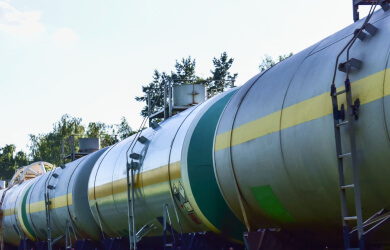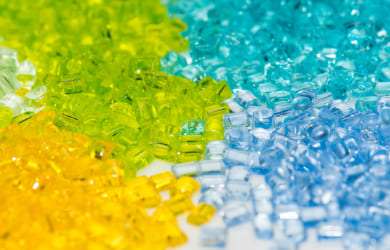Petroleum coke, also known as petcoke, is a versatile and cost-effective source of energy and high-quality carbon. It is produced from the residual crude oil left over from oil refining, specifically in delayed coking units.
The quality of petroleum coke varies depending on its chemical properties, including sulfur, ash, and metal content, as well as its physical properties, such as structure, hardness, and size. Importantly, the quality of the petcoke produced at each refinery is heavily influenced by the specific feedstock used, primarily the type of crude oil that was distilled into vacuum residue in the vacuum column.
Petroleum coke has several classifications, with the most relevant referring to its main downstream applications or industries. At Legion Oil & Gas LLC, we categorize petcoke into the following types:
- Anode-grade petcoke, which is used for the production of anodes for aluminum smelters.
- Fuel-grade petcoke, a solid fuel used in cement, glass, metallurgical, and other industries that require an inexpensive and efficient source of energy or carbon.
- Specialty cokes, unique quality materials that are either specifically produced or specially treated. These cokes are supplied in tailor-made supply chain solutions.
Clients choose Legion Oil & Gas LLC for their petcoke needs not just for the quality of our products, but also for our ability to deliver volume. Leveraging our expansive logistics network, we can export large quantities of petcoke across the eastern continents at competitive prices. Furthermore, we offer specific product adjustments based on a client’s specification, particularly in the calcined petcoke market. Our extensive research and market intelligence in this field are key to our success.
Types of Petroleum coke (Petcoke)
FAQ about petcoke
Petroleum coke, often referred to as ‘pet coke’ or ‘petcoke’, is a carbon-rich solid material that results from refining crude oil through processes like coking or cracking. It’s composed primarily of carbon (90-97%) along with smaller amounts of hydrogen (1.5-8%), nitrogen, chlorine, sulfur, and other elements. This substance typically appears in the form of granules, columns, or needles due to its graphite-like crystalline structure.
Due to its high carbon content and low ash, petroleum coke is widely used as an energy source in industries such as power generation, cement manufacturing, and metal smelting. Beyond that, it plays a vital role in producing aluminum, steel, glass, paint, fertilizers, and other products.
Petcoke is a byproduct of crude oil refining. The production process involves several steps:
- Crude oil is refined into lighter products like gasoline, diesel, and jet fuel.
- The remaining heavy fractions of oil undergo further processing in a coking unit.
- In the coking unit, high heat breaks down large hydrocarbon molecules, leaving behind a solid carbon-rich residue—this is petcoke.
- The petcoke undergoes calcination, where it is heated to remove impurities and increase its carbon concentration.
- The resulting product is a dense, carbon-based material used in various industrial applications.
Petroleum coke is typically transported in bulk using specialized carriers from refineries or dedicated terminals. Conveyor belts, shiploaders, and other loading equipment transfer the petcoke from storage to ships for global distribution.
Petroleum coke prices are closely tied to crude oil price fluctuations, as it is a byproduct of oil refining. Geopolitical tensions, global economic changes, and refinery operations (such as seasonal maintenance or unexpected shutdowns) all impact supply levels, which in turn affect petcoke pricing.













